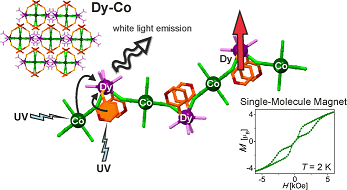
Szymon Chorazy
Jagiellonian University, Poland
Title: Photoluminescent crystalline magnetic materials based on trivalent lanthanide ions and polycyanidometallates
Biography
Biography: Szymon Chorazy
Abstract
Photo- and electroluminescence induced in solid-state materials arouse a remarkable interest due to a number of applications in light-emitting devices, optical communication, tunable laser systems, low-energy scintillation, energy conversion, chemical sensing, and bioimaging. Thus, there is a strong need to design and prepare new functional materials exhibiting efficient light-emitting functionalities, including white-light emission, near-infrared phosphorescence, multi-colored switchable emission, or up-conversion luminescence. Another exciting idea is to synthesize multifunctional luminescent materials that combine strong photoluminescence with other physical properties. In this regard, the conjunction of magnetic and emission phenomena are particularly attractive due to the expected cooperative effects, and the possibility of tuning light emission by a magnetic field. We present two main strategies toward bifunctional photoluminescent and magnetic materials, both realized within the family of heterobimetallic coordination polymers built of polycyanidometallates, [MV(CN)8]3-(M=Mo, W) and [MIII(CN)6]3- (M=Cr, Co), which serve as metalloligands to complexes of trivalent lanthanide ions with selected organic molecules. In the first approach, we present the synthetic route toward emissive molecule-based ferromagnets based on bimetallic octacyanido-bridged Tb-W and Tb-Mo, and hexacyanido-bridged Nd-Cr assemblies. They combine a long-range ferromagnetic ordering with the visible or near-infrared emission, depending on the applied lanthanide (3+) ions. Our second approach explores a strong magnetic anisotropy of Dy3 complexes leading to the effect of slow magnetic relaxation, which is named a single-molecule magnet (SMM) behavior. We embedded the Dy3 SMMs into bimetallic cyanido-bridged Dy-Co coordination networks producing the magneto-luminescent materials combining significant magnetic anisotropy with white light emission, or multi-colored visible emission tunable by the excitation light.

Recent Publications:
1.Chorazy S, Rams M, Nakabayashi K, Sieklucka B, Ohkoshi S (2016) White light emissive Dy3 single-molecule magnets sensitized by diamagnetic [Co3(CN)6]3- Linkers. Chemistry – A European Journal 22: 7371-7375.
2.Chorazy S, Wang J, Ohkoshi S (2016) Yellow to greenish-blue color-tunable photoluminescence and 4f-centered slow magnetic relaxation in a cyanido-bridged Dy3(4-hydroxypyridine)-Co3 layered material. Chemical Communications 52: 107595-10798.
3.Chorazy S, Sieklucka B, Ohkoshi S (2016) Near-infrared photoluminescence in hexacyanido-bridged Nd-Cr layered ferromagnet. Crystal Growth & Design 16: 4918-4925.
4.Chorazy S, Arczynski M, Nakabayashi K, Sieklucka B, Ohkoshi S (2015) Visible to near-infrared emission from Ln3(Bis-oxazoline)-[MoV(CN)8] (Ln=Ce-Yb) magnetic coordination polymers showing unusual lanthanide-dependent sliding of cyanido-bridged layers. Inorganic Chemistry 54: 4724-4736.
5.Chorazy S, Nakabayashi K, Ohkoshi S, Sieklucka B (2014) Green to red luminescence switchable by excitation light in cyanido-bridged Tb3-WVFerromagnet. Chemistry of Materials 26: 4072-4075.


